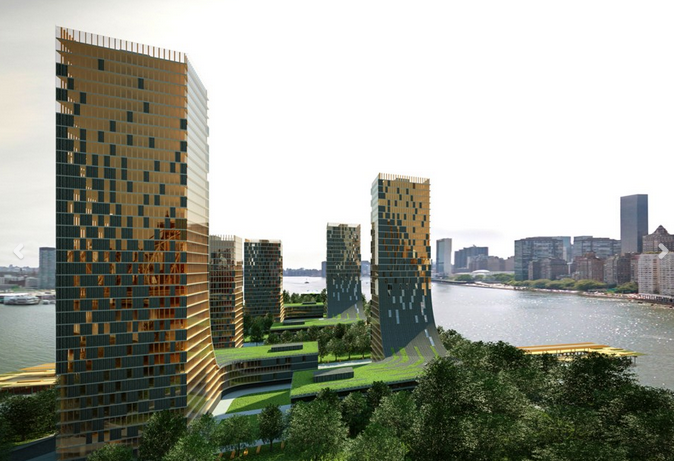

The main auditorium, with seating for 1,200, is a tour de force of timber, with vast glulam beams leaping across the ceiling and faceted wooden wedges acting as acoustic diffusers around the walls. “We wanted the building to be legible,” says Oskar Norelius of White Arkitekter, the biggest architecture practice in Scandinavia, with years of experience building in wood, “so people can see how it goes together.” Accordingly, thin steel rods form a cat’s cradle of bracings in the trusses above the main open level of the cultural centre, strung between chunky blocks of wood. Concrete is also used on the top two floors, to stop the tower from swaying too much in the wind. Big steel plates are bolted through the giant plywood walls on the fifth floor, revealing the presence of a big steel truss – used to transfer the weight of the tower to the walls of the cultural centre, making it possible to have a column-free space below. But look closely and you’ll see it’s not all wood. With all these exposed timber walls, ceilings and floors, the place feels like a gigantic sauna – with the aroma to match.

There’s one downside, though, at least from the hotel perspective: “The raw wooden walls absorb stains like red wine much faster than a painted wall,” says Sara Johansson, from the Elite hotel group, “so we have to be ready to clean much faster!” “The people building this would never go back to steel and concrete,” says Jesper Åkerlund from contractor Holmen, which is analysing improvements to its workforce’s mental health following the project. While a normal building site is a noisy, toxic place of fumes and dust, a timber one is a picture of serenity. Building in wood seems to have a positive effect on construction workers. Just like the region’s forest-foraged restaurant menus, this is meaningful local sourcing rather than a green veneer. Like bits of a giant balsa-wood model, the pieces came from factories ready to be bolted together, some in panels 27 metres long, while the trees were harvested from within a 60km radius of the site – and have all since been replenished. The number of truck deliveries was also reduced by about 90%, with practically zero waste on site. A whole year was saved by using wood, compared with steel and concrete, with a storey completed every two days. The “self-finish” nature of structural mass timber, which can simply be left exposed, means that the tower was incredibly quick to build, doing away with the usual wet trades of plastering and decorating. Finally, the double-skin glass facade keeps the rooms insulated in winter and cool in summer, as the warmed air rises between the panes of glass. The lift cores at either end of the 20-storey tower are made from CLT, with prefabricated hotel room pods stacked between them, incorporating glulam columns in their corners for strength. This makes it strong in all directions, so it is perfect for walls and floor slabs. It is ideal for columns and beams, and forms the structural bones of the cultural centre, which is home to two theatres, a museum, an art gallery and a library.ĬLT, meanwhile, is like super-sized plywood, with each layer stuck at right-angles to the next. The former is made from layers of lumber bonded together, with the grain running in the same direction, giving it a higher load-bearing capacity than both steel and concrete, relative to its weight. The two main materials are glued laminated timber (glulam) and cross-laminated timber (CLT). The technology behind it is surprisingly simple. The people who built this would never go back to steel and concrete “Twenty floors high in wood? In Skellefteå?” Thanks to three teams of structural engineers, and the region’s prefabrication expertise, the timber tower now stands as a blueprint for a new generation of “plyscrapers”. “When I saw the competition proposal, I didn’t think it would be possible to build,” says the mayor, Lorents Burman. The Sara Cultural Centre and its towering Wood Hotel stand as beacons of what it is possible to do with timber – and store about 9,000 tonnes of carbon from the atmosphere in the process.

And now, nosing 20 storeys above the low-rise skyline, Skellefteå has a fitting monument to its carbon-cutting credentials. Skellefteå runs on 100% renewable energy from hydropower and wind, and recycles 120,000 tonnes of electronic waste a year, with excess heat from the process fed back into the city-wide heating system.


 0 kommentar(er)
0 kommentar(er)
